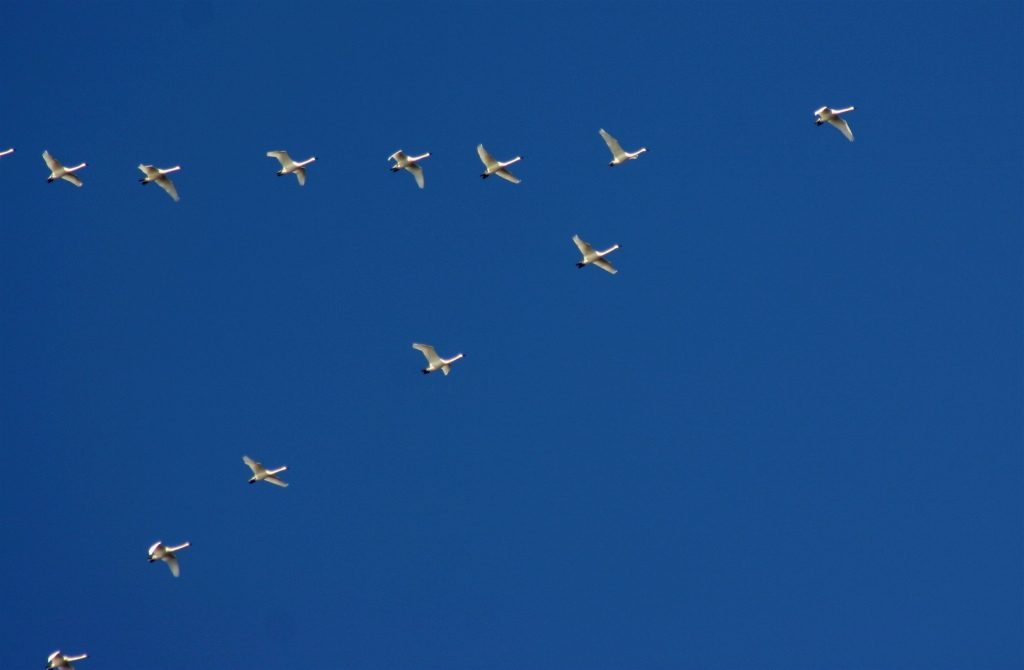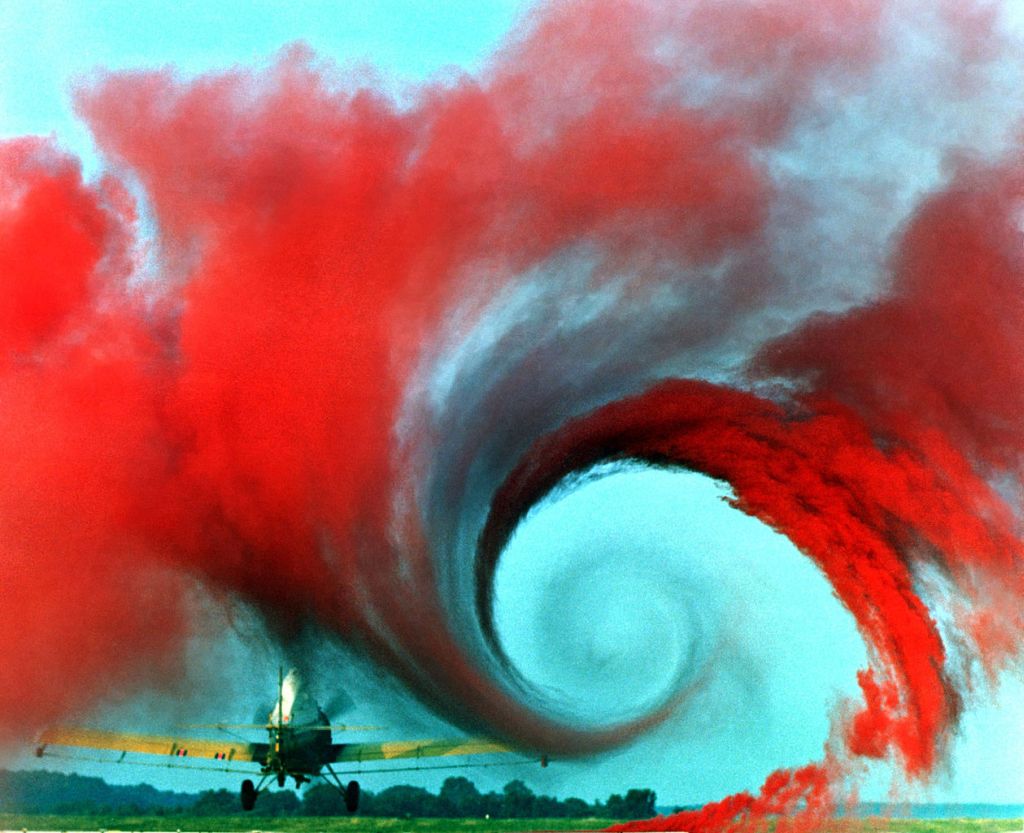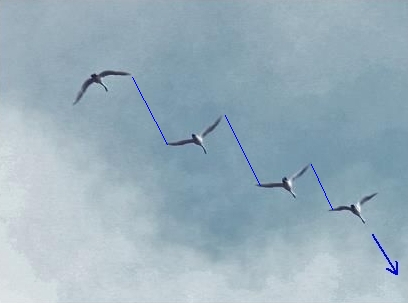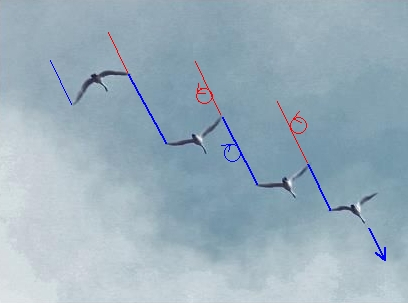
Why do swans, geese, and ducks fly in V formation?
Because it makes their journey easier.
Everything that flies experiences air turbulence that slows it down (drag). Some of the turbulence is created by the act of flying. For instance while rising up (lift) cones of swirling air called vortices roll off the wingtips and induce drag. Here’s a dramatic photo of a wingtip vortex, enhanced by red smoke.

The right and left wing vortices swirl in opposite directions — the left spins clockwise, the right counter-clockwise — resulting in two trailing swirls behind the airplane or bird. Watch it happen in this video as the airplane passes through a cloud.
The induced drag is especially hard on large or heavy birds (swans and geese) and birds with small wings relative to their size (ducks) so these birds line up in Vs to reduce the turbulence.
Here’s how the line works.
In the photo below, four tundra swans are flying in the direction of the blue arrow. Behind the leader, the blue lines show that each following bird has its right wingtip in line with the left wingtip of the bird ahead of it.

Now I’ll draw the vortices and their spinning directions using blue for the left wing, red for the right wing. Blue/left spins clockwise. Red/right spins counter-clockwise.

When the blue vortex meets the red vortex at the wingtip, they cancel each other out. By lining up in this fashion, each bird has one wing that experiences less turbulence. That makes it easier to fly.
The lead bird is out there alone, though. He’s the only one who gets no assistance so he tires before the rest of the flock. The flock solves this by changing leaders when the first one needs to rest. The lead bird drops back into the V and another bird takes his place.
Long, long ago birds solved the problem of wingtip turbulence. When we invented airplanes we found out what it was all about.
(Credits: Tundra swans in blue sky by Chuck Tague. Line of swans by Marcy Cunkelman. Red vortex photo by NASA via Wikimedia Commons; click on the image to see the original. Video by whosyourcaddy on YouTube. Today’s Tenth Page is inspired by a diagram on page 123 of Ornithology by Frank B. Gill.)
Thanks for the technical explanation. My question is why the V usually has a longer line on side than the other. Like a large tick mark. I am not sure if it a usual formation, or is something I noticed while watching parts of a documentary called Winged Migration.
I have a theory about one longer side than the other: If it’s a very large flock the width of the V would be too great to be practical. …But who knows?
Someone needs to explain this to the Sandhill Cranes.
New research as of January 2014, published in USA Today
I was very puzzled to find a flock of a dozen or so geese passing over my neighborhood this morning…in V-formation. Do geese ever fly this way when they are not migrating? I thought that these birds would have separated two-by-two months ago, and be busy now, raising their individual broods. Could this flock be from the still thawing Great Lakes? Possibly yearling birds who haven’t found mates yet?
Carolyn, Canada geese don’t breed until they are two years old so the group you saw may have been the “teenagers.” Geese fly in formation when they’re moving to different feeding areas because the V formation is more efficient (as the article describes).
I also have looked skyward and noticed the uneven “v” formation. Like the fiddler crabs that are left or right handed I suppose the geese are similar. If the dominate or stronger wing is on the outside of the “v” then the boost from the vortex would help the weaker wing on the inside of the “v”. Watching the geese practice prior to leaving on migration I see the formation forms and soon breaks up only to form up again with birds in different positions. I suspect they are finding out their dominate wing. I’m working on a project in the garage that uses this vortex. Perhaps I’ll discover something.
I’m the historian at NASA”s Armstrong Flight Research Center, writing a book about spanloads. One of the chapters discusses formation flight of birds and I’d like to know if it’s possible to use the image at the top of this article (https://www.birdsoutsidemywindow.org/2013/01/18/why-we-fly-in-v-formation/) in the book.
As an employee at the center I have no way to compensate you financially: I write under salary and receive no derivative financial benefit for my books. NASA doesn’t do that. I can send you copies of the book when done, of course.
Dr. Christian Gelzer
Historian (Logical innovations, Inc.
NASA Armstrong Flight Research Center
Dr. Gelzer, I’ll send you an answer in email.